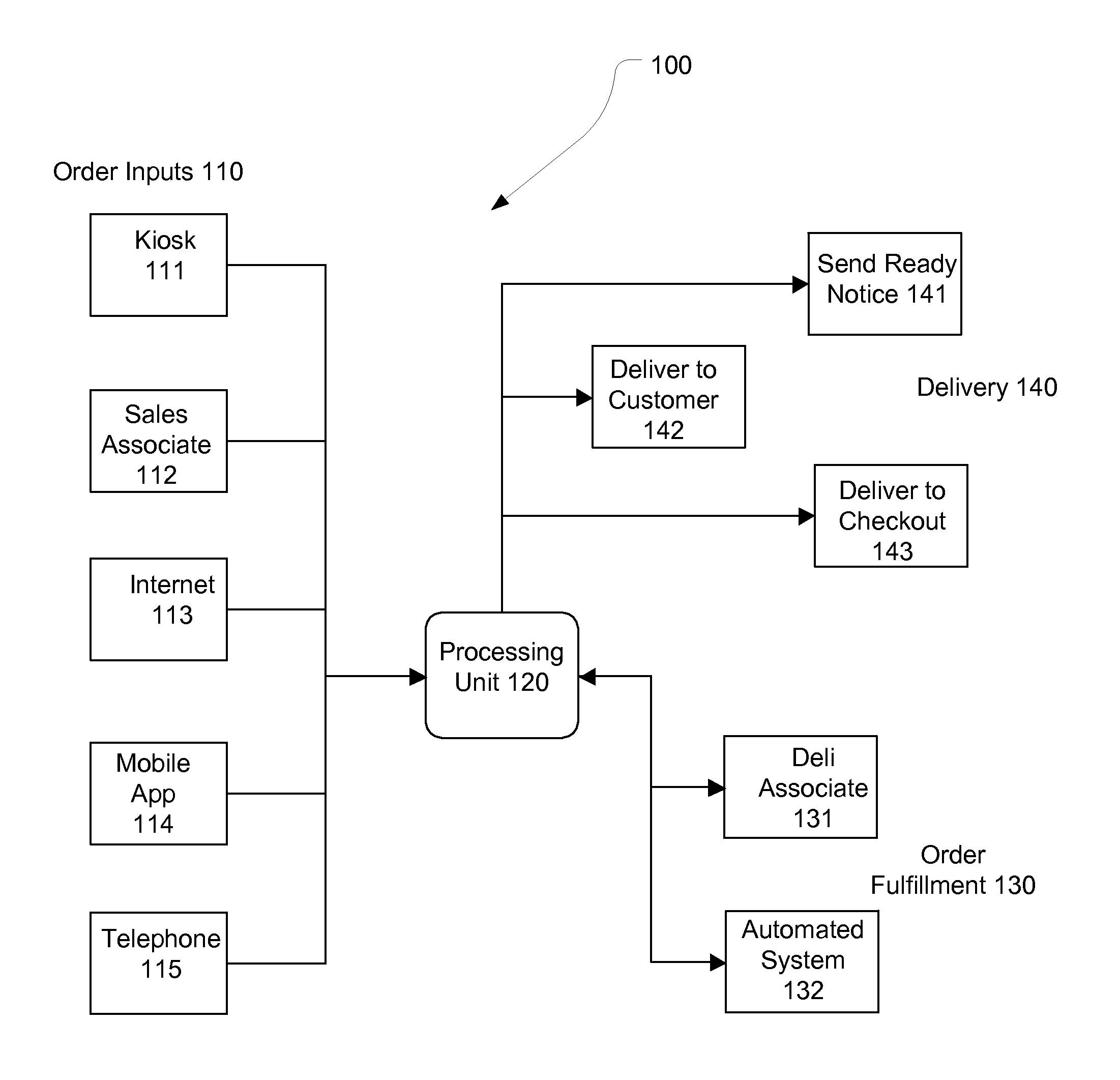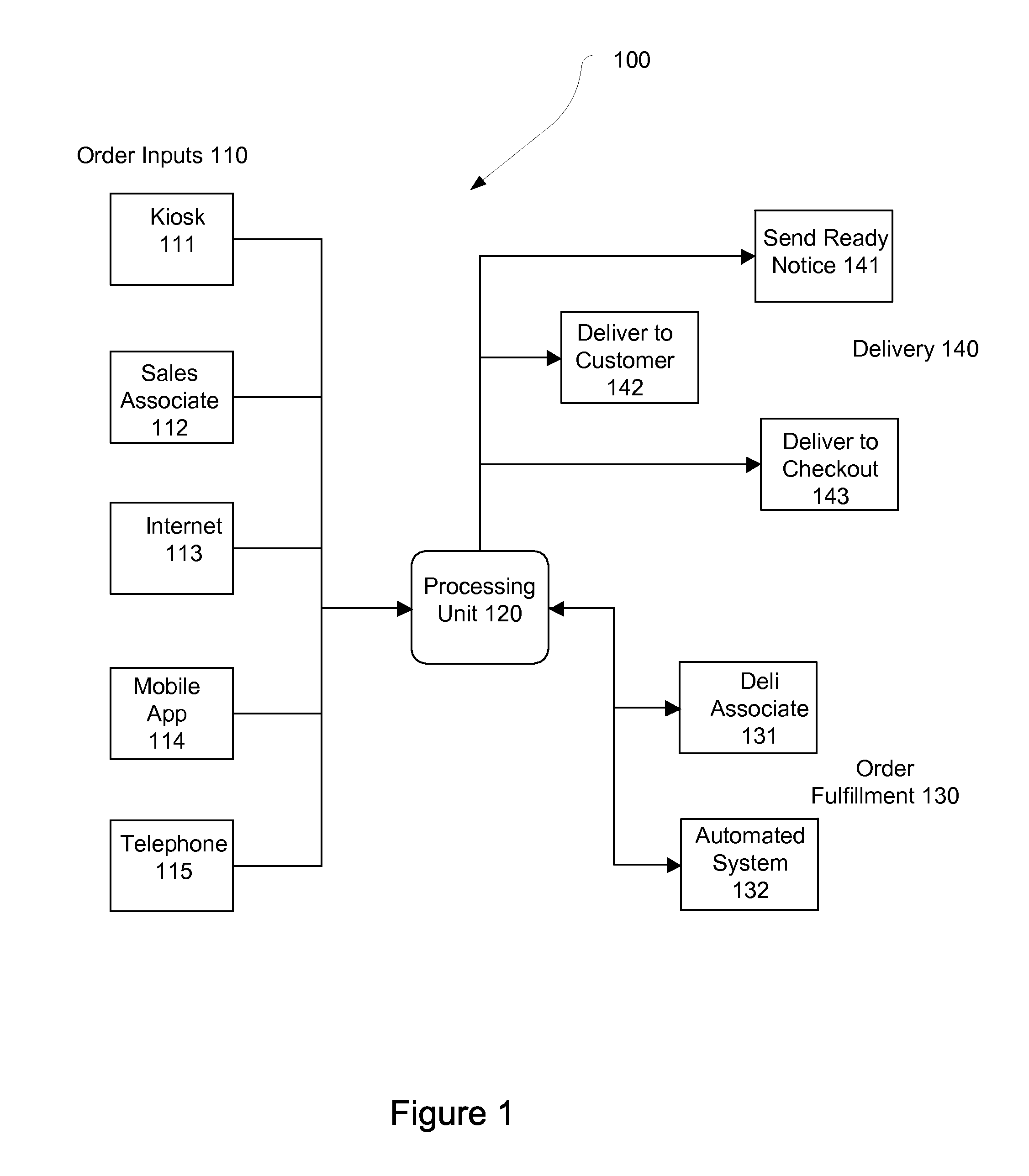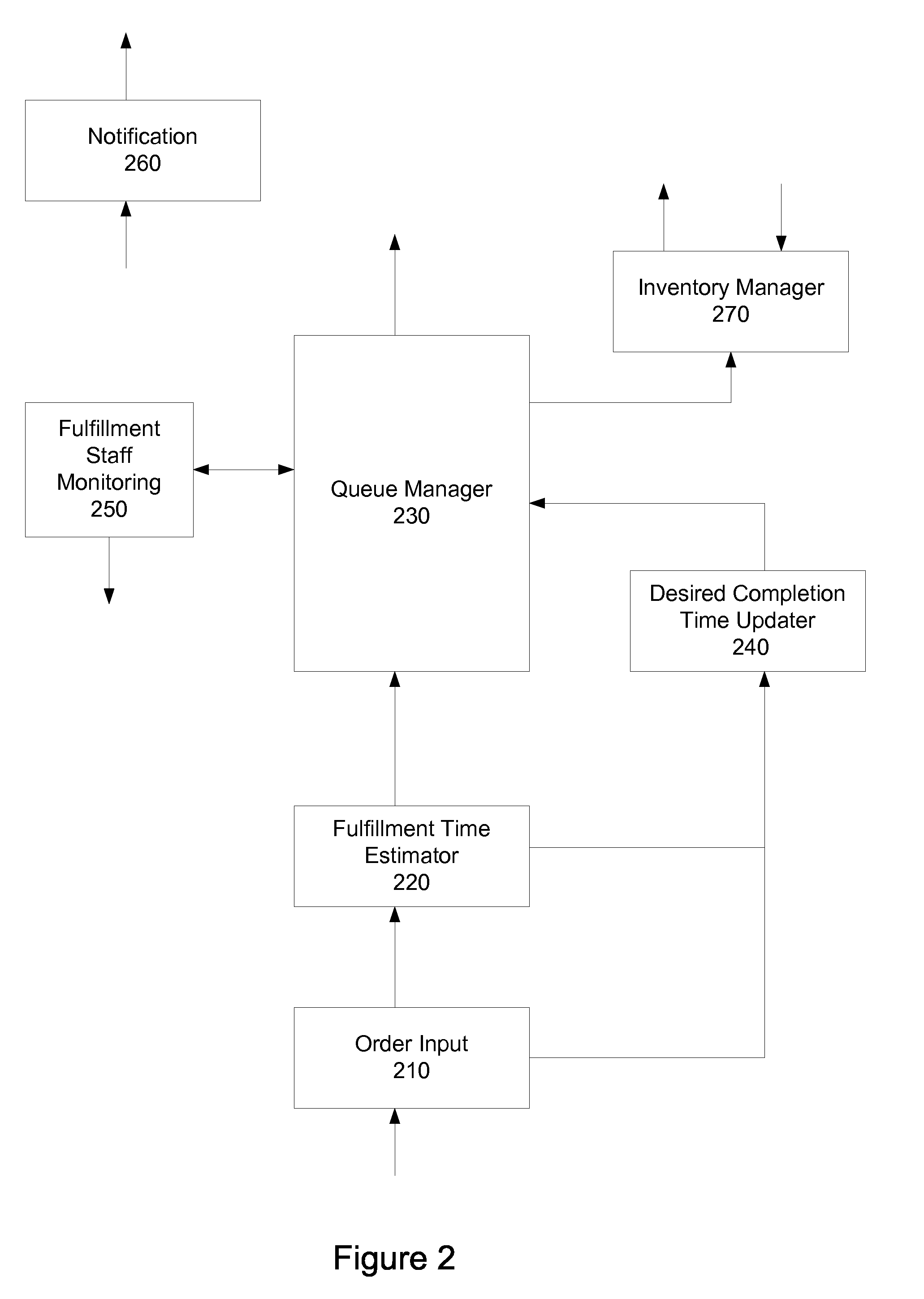Dynamic queueing and management system
a management system and dynamic technology, applied in the field of dynamic queueing and management system, can solve the problems of inexact practice, inability to integrate kiosk orders with those of waiting customers, and inability to meet customer requirements, so as to achieve the effect of speeding up service and maximizing the efficiency of fulfillment sta
- Summary
- Abstract
- Description
- Claims
- Application Information
AI Technical Summary
Benefits of technology
Problems solved by technology
Method used
Image
Examples
Embodiment Construction
[0012]As described above, the queuing systems used for deli counters in most supermarkets have shortcomings. While the current invention describes a queueing and management system for deli applications, it should be obvious that the present invention can be utilized for other applications, particularly in retail, or wherever real-time order fulfillment is needed, such as warehouse operations. Furthermore, within the supermarket, the current invention may be used for any orderable or customizable item, such as salads, bakery, seafood and butcher counter orders.
[0013]For the purposes of this disclosure, an “order” is defined as a single item or multiple items that are requested by the consumer or customer. An “item” is a request for a single food, including its slice thickness, packaging preferences, etc. In the example of the deli, an example of a single item could be one half pound of roast beef, sliced medium in thickness. An example of multiple items may be a half pound of roast b...
PUM
 Login to View More
Login to View More Abstract
Description
Claims
Application Information
 Login to View More
Login to View More - R&D
- Intellectual Property
- Life Sciences
- Materials
- Tech Scout
- Unparalleled Data Quality
- Higher Quality Content
- 60% Fewer Hallucinations
Browse by: Latest US Patents, China's latest patents, Technical Efficacy Thesaurus, Application Domain, Technology Topic, Popular Technical Reports.
© 2025 PatSnap. All rights reserved.Legal|Privacy policy|Modern Slavery Act Transparency Statement|Sitemap|About US| Contact US: help@patsnap.com



